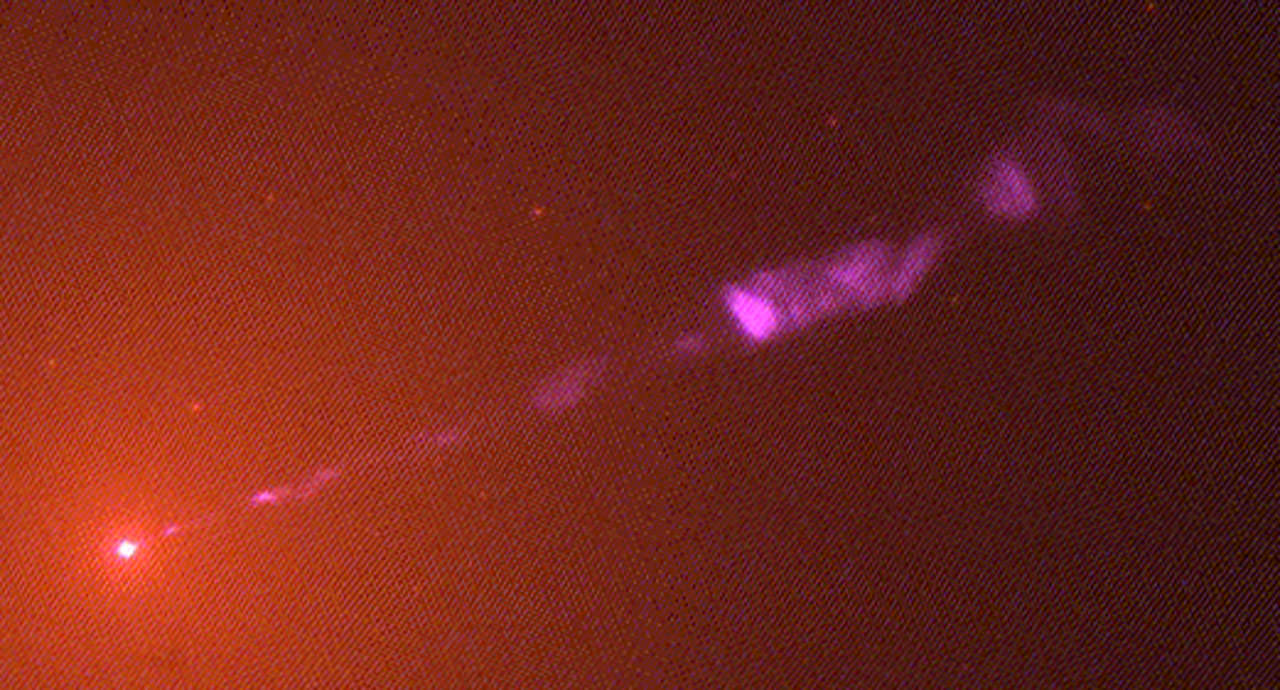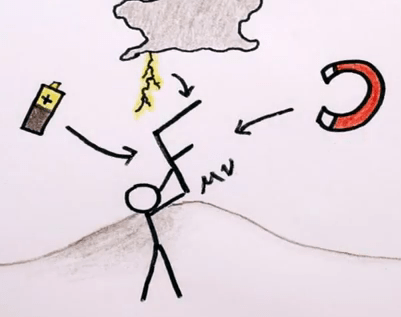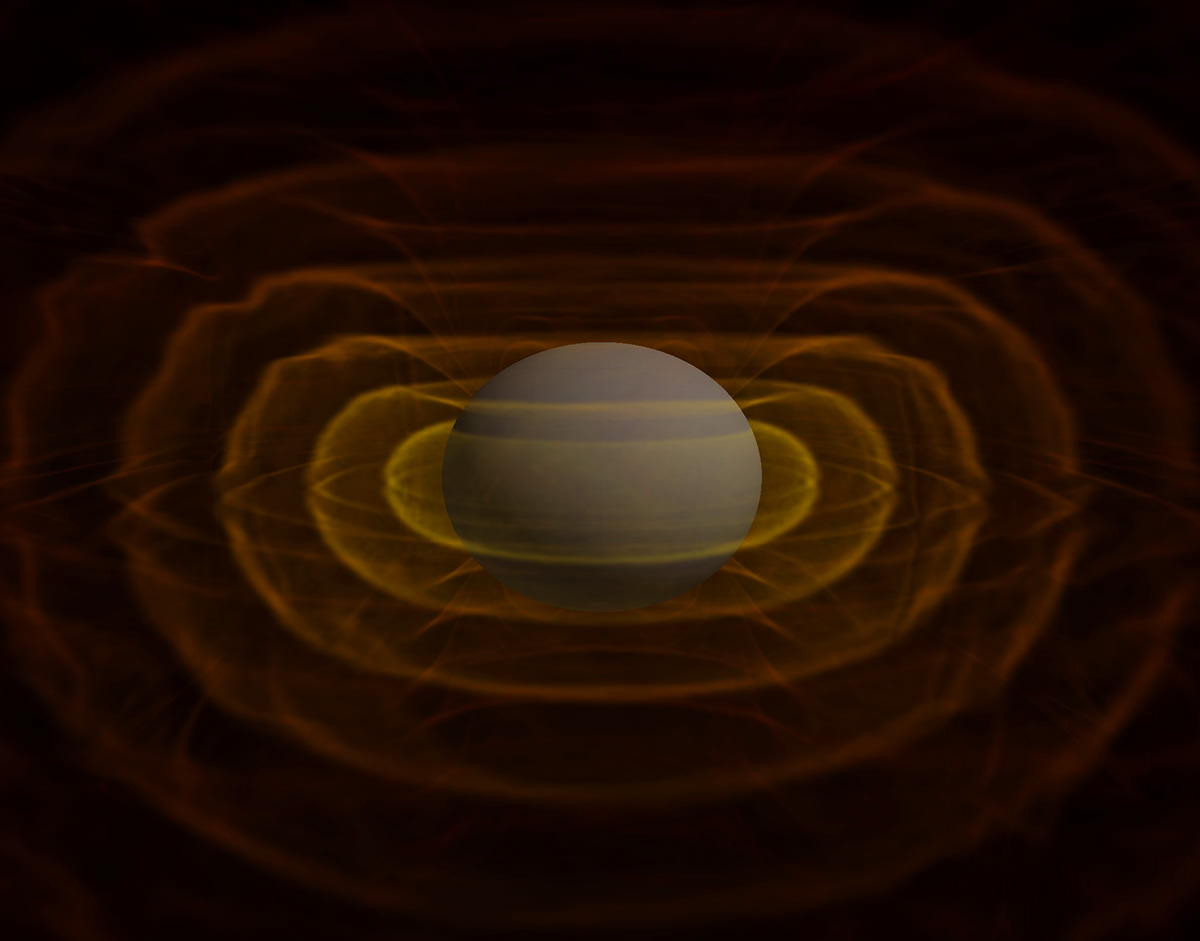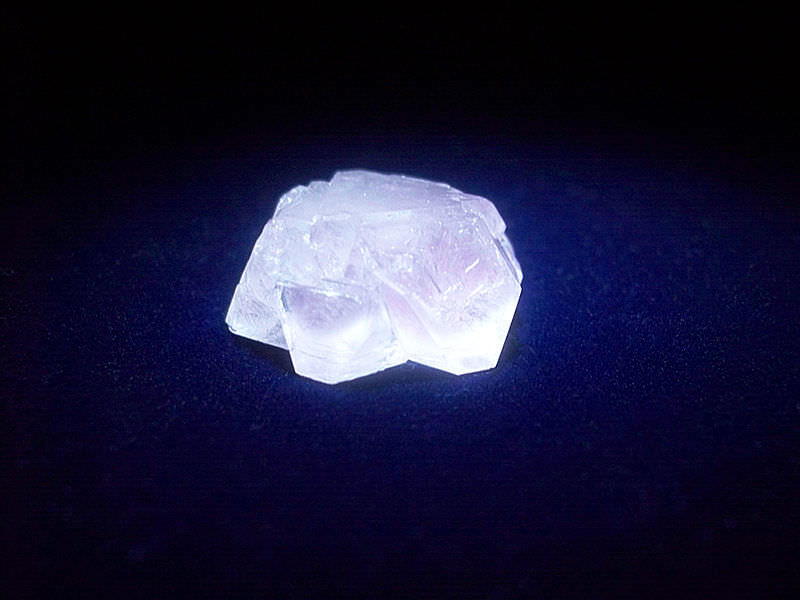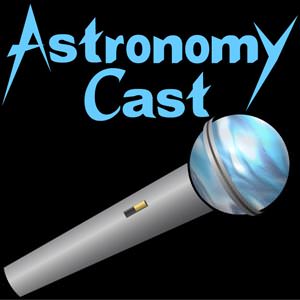The folks at Minute Physics keep coming up with videos too great not to share. This one deals with gravity, distances and speeds, I’m guessing this might have a part 2!
Black Hole Jets Might Be Molded by Magnetism
Visible-light Hubble image of the jet emitted by the 3-billion-solar-mass black hole at the heart of galaxy M87 (Feb. 1998) Credit: NASA/ESA and John Biretta (STScI/JHU)
Even though black holes — by their definition and very nature — are the ultimate hoarders of the Universe, gathering and gobbling up matter and energy to the extent that not even light can escape their gravitational grip, they also often exhibit the odd behavior of flinging vast amounts of material away from them as well, in the form of jets that erupt hundreds of thousands — if not millions — of light-years out into space. These jets contain superheated plasma that didn’t make it past the black hole’s event horizon, but rather got “spun up” by its powerful gravity and intense rotation and ended up getting shot outwards as if from an enormous cosmic cannon.
The exact mechanisms of how this all works aren’t precisely known as black holes are notoriously tricky to observe, and one of the more perplexing aspects of the jetting behavior is why they always seem to be aligned with the rotational axis of the actively feeding black hole, as well as perpendicular to the accompanying accretion disk. Now, new research using advanced 3D computer models is supporting the idea that it’s the black holes’ ramped-up rotation rate combined with plasma’s magnetism that’s responsible for shaping the jets.
In a recent paper published in the journal Science, assistant professor at the University of Maryland Jonathan McKinney, Kavli Institute director Roger Blandford and Princeton University’s Alexander Tchekhovskoy report their findings made using computer simulations of the complex physics found in the vicinity of a feeding supermassive black hole. These GRMHD — which stands for General Relativistic Magnetohydrodynamic — computer sims follow the interactions of literally millions of particles under the influence of general relativity and the physics of relativistic magnetized plasmas… basically, the really super-hot stuff that’s found within a black hole’s accretion disk.
Read more: First Look at a Black Hole’s Feast
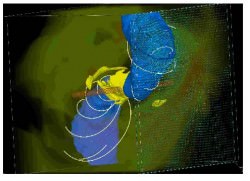 What McKinney et al. found in their simulations was that no matter how they initially oriented the black hole’s jets, they always eventually ended up aligned with the rotational axis of the black hole itself — exactly what’s been found in real-world observations. The team found that this is caused by the magnetic field lines generated by the plasma getting twisted by the intense rotation of the black hole, thus gathering the plasma into narrow, focused jets aiming away from its spin axes — often at both poles.
What McKinney et al. found in their simulations was that no matter how they initially oriented the black hole’s jets, they always eventually ended up aligned with the rotational axis of the black hole itself — exactly what’s been found in real-world observations. The team found that this is caused by the magnetic field lines generated by the plasma getting twisted by the intense rotation of the black hole, thus gathering the plasma into narrow, focused jets aiming away from its spin axes — often at both poles.
At farther distances the influence of the black hole’s spin weakens and thus the jets may then begin to break apart or deviate from their initial paths — again, what has been seen in many observations.
This “magneto-spin alignment” mechanism, as the team calls it, appears to be most prevalent with active supermassive black holes whose accretion disk is more thick than thin — the result of having either a very high or very low rate of in-falling matter. This is the case with the giant elliptical galaxy M87, seen above, which exhibits a brilliant jet created by a 3-billion-solar-mass black hole at its center, as well as the much less massive 4-million-solar-mass SMBH at the center of our own galaxy, Sgr A*.
Read more: Milky Way’s Black Hole Shoots Out Brightest Flare Ever
Using these findings, future predictions can be better made concerning the behavior of accelerated matter falling into the heart of our galaxy.
Read more on the Kavli Institute’s news release here.
Inset image: Snapshot of a simulated black hole system. (McKinney et al.) Source: The Kavli Institute for Particle Astrophysics and Cosmology (KIPAC)
Minute Physics: Why E=mc² is Incomplete
Here’s another great video from the folks at Minute Physics. One of the most famous equations from one of the world’s most famous scientists is a bit more complicated than many people realize. E=mc² only describes objects with mass that aren’t moving. But what about massless particles – like light – that are moving? Check out the video for a quick explanation!
The 2012 Nobel Prize in Physics, Explained
This hot-off-the-press video from the science-explainer folks at Sixty Symbols does a great job of detailing the science of the work by Serge Haroche of France and American David Wineland, which won them 2012 Nobel Prize in physics today. Their experiments on quantum particles have already resulted in ultra-precise clocks and may one day help lead to computers that can work faster than those in use today.
The video also shows how expectations were that the prize might go to the teams at the Large Hadron Collier for the discovery of what they called a “Higgs-like boson” — a particle that resembles the long sought-after Higgs.
Continue reading “The 2012 Nobel Prize in Physics, Explained”
Minute Physics: Real World Telekinesis
How do magnets affect things at a distance? How does the Sun heat our planet from 93 million miles away? How can we send messages across the world with our cell phones? We take these seemingly simple things for granted, but in fact there was a time not too long ago when the processes behind them were poorly understood, if at all… and, to the uninformed, there could seem to be a certain sense of “magic” about them.
This video from MinutePhysics, featuring director of the Perimeter Institute for Theoretical Physics Neil Turok, illustrates how our understanding of electromagnetic fields was developed and why there’s nothing magic about it… except, perhaps, how they pack all that excellent info into 5 minutes. Enjoy!
Video: MinutePhysics (Created by Henry Reich.) In conjunction with The CBC Massey Lectures.
What Happens When Supermassive Black Holes Merge?
Frame from a simulation of the merger of two black holes and the resulting emission of gravitational radiation (NASA/C. Henze)
The short answer? You get one super-SUPERmassive black hole. The longer answer?
Well, watch the video below for an idea.
This animation, created with supercomputers at the University of Colorado, Boulder, show for the first time what happens to the magnetized gas clouds that surround supermassive black holes when two of them collide.
The simulation shows the magnetic fields intensifying as they contort and twist turbulently, at one point forming a towering vortex that extends high above the center of the accretion disk.
This funnel-like structure may be partly responsible for the jets that are sometimes seen erupting from actively feeding supermassive black holes.
The simulation was created to study what sort of “flash” might be made by the merging of such incredibly massive objects, so that astronomers hunting for evidence of gravitational waves — a phenomenon first proposed by Einstein in 1916 — will be able to better identify their potential source.
Read: Effects of Einstein’s Elusive Gravity Waves Observed
Gravitational waves are often described as “ripples” in the fabric of space-time, infinitesimal perturbations created by supermassive, rapidly rotating objects like orbiting black holes. Detecting them directly has proven to be a challenge but researchers expect that the technology will be available within several years’ time, and knowing how to spot colliding black holes will be the first step in identifying any gravitational waves that result from the impact.
In fact, it’s the gravitational waves that rob energy from the black holes’ orbits, causing them to spiral into each other in the first place.
“The black holes orbit each other and lose orbital energy by emitting strong gravitational waves, and this causes their orbits to shrink. The black holes spiral toward each other and eventually merge,” said astrophysicist John Baker, a research team member from NASA’s Goddard Space Flight Center. “We need gravitational waves to confirm that a black hole merger has occurred, but if we can understand the electromagnetic signatures from mergers well enough, perhaps we can search for candidate events even before we have a space-based gravitational wave observatory.”
The video below shows the expanding gravitational wave structure that would be expected to result from such a merger:
If ground-based telescopes can pinpoint the radio and x-ray flash created by the mergers, future space telescopes — like ESA’s eLISA/NGO — can then be used to try and detect the waves.
Read more on the NASA Goddard new release here.
First animation credit: NASA’s Goddard Space Flight Center/P. Cowperthwaite, Univ. of Maryland. Second animation: NASA/C. Henze.
Effects of Einstein’s Elusive Gravitational Waves Observed
Two white dwarfs similar to those in the system SDSS J065133.338+284423.37 spiral together in this illustration from NASA. Credit: D. Berry/NASA GSFC
Locked in a spiraling orbital embrace, the super-dense remains of two dead stars are giving astronomers the evidence needed to confirm one of Einstein’s predictions about the Universe.
A binary system located about 3,000 light-years away, SDSS J065133.338+284423.37 (J0651 for short) contains two white dwarfs orbiting each other rapidly — once every 12.75 minutes. The system was discovered in April 2011, and since then astronomers have had their eyes — and four separate telescopes in locations around the world — on it to see if gravitational effects first predicted by Einstein could be seen.
According to Einstein, space-time is a structure in itself, in which all cosmic objects — planets, stars, galaxies — reside. Every object with mass puts a “dent” in this structure in all dimensions; the more massive an object, the “deeper” the dent. Light energy travels in a straight line, but when it encounters these dents it can dip in and veer off-course, an effect we see from Earth as gravitational lensing.
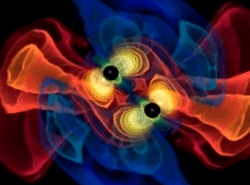 Einstein also predicted that exceptionally massive, rapidly rotating objects — such as a white dwarf binary pair — would create outwardly-expanding ripples in space-time that would ultimately “steal” kinetic energy from the objects themselves. These gravitational waves would be very subtle, yet in theory, observable.
Einstein also predicted that exceptionally massive, rapidly rotating objects — such as a white dwarf binary pair — would create outwardly-expanding ripples in space-time that would ultimately “steal” kinetic energy from the objects themselves. These gravitational waves would be very subtle, yet in theory, observable.
Read: Astronomy Without a Telescope: Gravitational Waves
What researchers led by a team at The University of Texas at Austin have found is optical evidence of gravitational waves slowing down the stars in J0651. Originally observed in 2011 eclipsing each other (as seen from Earth) once every six minutes, the stars now eclipse six seconds sooner. This equates to a predicted orbital period reduction of about 0.25 milliseconds each year.*
“These compact stars are orbiting each other so closely that we have been able to observe the usually negligible influence of gravitational waves using a relatively simple camera on a 75-year-old telescope in just 13 months,” said study lead author J.J. Hermes, a graduate student at The University of Texas at Austin.
Based on these measurements, by April 2013 the stars will be eclipsing each other 20 seconds sooner than first observed. Eventually they will merge together entirely.
Although this isn’t “direct” observation of gravitational waves, it is evidence inferred by their predicted effects… akin to watching a floating lantern in a dark pond at night moving up and down and deducing that there are waves present.
“It’s exciting to confirm predictions Einstein made nearly a century ago by watching two stars bobbing in the wake caused by their sheer mass,” said Hermes.
As of early last year NASA and ESA had a proposed mission called LISA (Laser Interferometer Space Antenna) that would have put a series of 3 detectors into space 5 million km apart, connected by lasers. This arrangement of precision-positioned spacecraft could have detected any passing gravitational waves in the local space-time neighborhood, making direct observation possible. Sadly this mission was canceled due to FY2012 budget cuts for NASA, but ESA is moving ahead with developments for its own gravitational wave mission, called eLISA/NGO — the first “pathfinder” portion of which is slated to launch in 2014.
The study was submitted to Astrophysical Journal Letters on August 24. Read more on the McDonald Observatory news release here.
Inset image: simulation of binary black holes causing gravitational waves – C. Reisswig, L. Rezzolla (AEI); Scientific visualization – M. Koppitz (AEI & Zuse Institute Berlin)
*The difference in the eclipse time is noted as six seconds even though the orbital period decay of the two stars is only .25 milliseconds/year because of a pile-up effect of all the eclipses observed since April 2011. The measurements made by the research team takes into consideration the phase change in the J0651 system, which experiences a piling effect — similar to an out-of-sync watch — that increases relative to time^2 and is therefore a larger and easier number to detect and work with. Once that was measured, the actual orbital period decay could be figured out.
Data from Black Hole’s Edge Provides New Test of Relativity
Last year, astronomers discovered a quiescent black hole in a distant galaxy that erupted after shredding and consuming a passing star. Now researchers have identified a distinctive X-ray signal observed in the days following the outburst that comes from matter on the verge of falling into the black hole.
This tell-tale signal, called a quasi-periodic oscillation or QPO, is a characteristic feature of the accretion disks that often surround the most compact objects in the universe — white dwarf stars, neutron stars and black holes. QPOs have been seen in many stellar-mass black holes, and there is tantalizing evidence for them in a few black holes that may have middleweight masses between 100 and 100,000 times the sun’s.
Until the new finding, QPOs had been detected around only one supermassive black hole — the type containing millions of solar masses and located at the centers of galaxies. That object is the Seyfert-type galaxy REJ 1034+396, which at a distance of 576 million light-years lies relatively nearby.
“This discovery extends our reach to the innermost edge of a black hole located billions of light-years away, which is really amazing. This gives us an opportunity to explore the nature of black holes and test Einstein’s relativity at a time when the universe was very different than it is today,” said Rubens Reis, an Einstein Postdoctoral Fellow at the University of Michigan in Ann Arbor. Reis led the team that uncovered the QPO signal using data from the orbiting Suzaku and XMM-Newton X-ray telescopes, a finding described in a paper published today in Science Express.
The X-ray source known as Swift J1644+57 — after its astronomical coordinates in the constellation Draco — was discovered on March 28, 2011, by NASA’s Swift satellite. It was originally assumed to be a more common type of outburst called a gamma-ray burst, but its gradual fade-out matched nothing that had been seen before. Astronomers soon converged on the idea that what they were seeing was the aftermath of a truly extraordinary event — the awakening of a distant galaxy’s dormant black hole as it shredded and gobbled up a passing star. The galaxy is so far away that light from the event had to travel 3.9 billion years before reaching Earth.
Video info: On March 28, 2011, NASA’s Swift detected intense X-ray flares thought to be caused by a black hole devouring a star. In one model, illustrated here, a sun-like star on an eccentric orbit plunges too close to its galaxy’s central black hole. About half of the star’s mass feeds an accretion disk around the black hole, which in turn powers a particle jet that beams radiation toward Earth. Credit: NASA’s Goddard Space Flight Center/Conceptual Image Lab
The star experienced intense tides as it reached its closest point to the black hole and was quickly torn apart. Some of its gas fell toward the black hole and formed a disk around it. The innermost part of this disk was rapidly heated to temperatures of millions of degrees, hot enough to emit X-rays. At the same time, through processes still not fully understood, oppositely directed jets perpendicular to the disk formed near the black hole. These jets blasted matter outward at velocities greater than 90 percent the speed of light along the black hole’s spin axis. One of these jets just happened to point straight at Earth.
Nine days after the outburst, Reis, Strohmayer and their colleagues observed Swift J1644+57 using Suzaku, an X-ray satellite operated by the Japan Aerospace Exploration Agency with NASA participation. About ten days later, they then began a longer monitoring campaign using the European Space Agency’s XMM-Newton observatory.
“Because matter in the jet was moving so fast and was angled nearly into our line of sight, the effects of relativity boosted its X-ray signal enough that we could catch the QPO, which otherwise would be difficult to detect at so great a distance,” said Tod Strohmayer, an astrophysicist and co-author of the study at NASA’s Goddard Space Flight Center in Greenbelt, Md.
As hot gas in the innermost disk spirals toward a black hole, it reaches a point astronomers refer to as the innermost stable circular orbit (ISCO). Any closer to the black hole and gas rapidly plunges into the event horizon, the point of no return. The inward spiraling gas tends to pile up around the ISCO, where it becomes tremendously heated and radiates a flood of X-rays. The brightness of these X-rays varies in a pattern that repeats at a nearly regular interval, creating the QPO signal.
The data show that Swift J1644+57’s QPO cycled every 3.5 minutes, which places its source region between 2.2 and 5.8 million miles (4 to 9.3 million km) from the center of the black hole, the exact distance depending on how fast the black hole is rotating. To put this in perspective, the maximum distance is only about 6 times the diameter of our sun. The distance from the QPO region to the event horizon also depends on rotation speed, but for a black hole spinning at the maximum rate theory allows, the horizon is just inside the ISCO.
“QPOs send us information from the very brim of the black hole, which is where the effects of relativity become most extreme,” Reis said. “The ability to gain insight into these processes over such a vast distance is a truly beautiful result and holds great promise.”
Read our previous article on Swift J1644+57
Lead image caption: This illustration highlights the principal features of Swift J1644+57 and summarizes what astronomers have discovered about it. Credit: NASA’s Goddard Space Flight Center
A Space-Time Crystal to Outlive the Universe
Caption: Selfmade Alum Crystal. Weight 5.01g Source: JanDerChemiker via wikimedia commons
The second law of thermodynamics states that all isolated systems head towards entropy. Our universe will one day reach a state where all energy is evenly distributed and can no longer sustain motion or life. A group of physicists have speculated that a device called a ‘space-time crystal’ could theoretically continue to work as a computer even after the heat death of the universe. Trouble was that they had no idea how to build a space-time crystal, until now.
Crystals are made up of repeating patterns of atoms or molecules, they are symmetrical in space and in their lowest energy state. They are the result of removing all the energy from a system (like ice crystals forming when heat is taken away) Nobel-prize winning physicist Frank Wilczek at the Massachusetts Institute of Technology speculated that the symmetry of such crystalline structures could exist in the fourth dimension of time as well as in space. The atoms in a time crystal would constantly rotate and return to their original location and, being in their lowest possible energy state they would continue to rotate even after the universe has succumbed to entropy. Such a repeating pattern of motion usually requires energy but now a group of scientists at the University of Michigan in Ann Arbor and Tsinghua University in Beijing, led by Tongcang Li at the University of California, Berkeley think they have worked out how to create such a crystal in its lowest energy state that shows this repeating pattern, or periodic structure, in both space and time, a space-time crystal.
They propose constructing an ion trap, which holds charged particles in place using an electric field. The ions naturally repel each other due to Coulomb repulsion, forming a ring-shaped crystal which can be made to rotate by applying a weak static magnetic field. If you then remove the electric field, the ions will continue rotating by themselves. This does not violate any laws of physics, it isn’t a perpetual motion machine as no energy can be taken out of the system, it can’t do any work even though it is moving. The main challenge to building the crystal will be the need to bring the temperatures close to absolute zero.
Space-time crystals’ periodicity makes them natural clocks. Wilczek suggests building a computer from a working time crystal, with different rotational states standing in for the 0s and 1s of a conventional computer. Such a computer would be able to survive the eventual heat death of the Universe. There is just one small snag, however, as Tongcang Li admits “we focus on a space-time crystal that can be created in a laboratory, so you need to figure out a method to make a laboratory that can survive in the heat-death of the universe.”
Read more here
Astronomy Cast Ep. 269: Mass

Last week we talked about energy, and this week we’ll talk about mass. And here’s the crazy thing. Mass, matter, the stuff that the Universe is made of, is the same thing as energy. They’re connected through Einstein’s famous formula – E=mc2. But what is mass, how do we measure it, and how does it become energy, and vice versa.
Click here to download the episode.
Or subscribe to: astronomycast.com/podcast.xml with your podcatching software.
“Mass” on the Astronomy Cast website, with shownotes and transcript.
And the podcast is also available as a video, as Fraser and Pamela now record Astronomy Cast as part of a Google+ Hangout:

